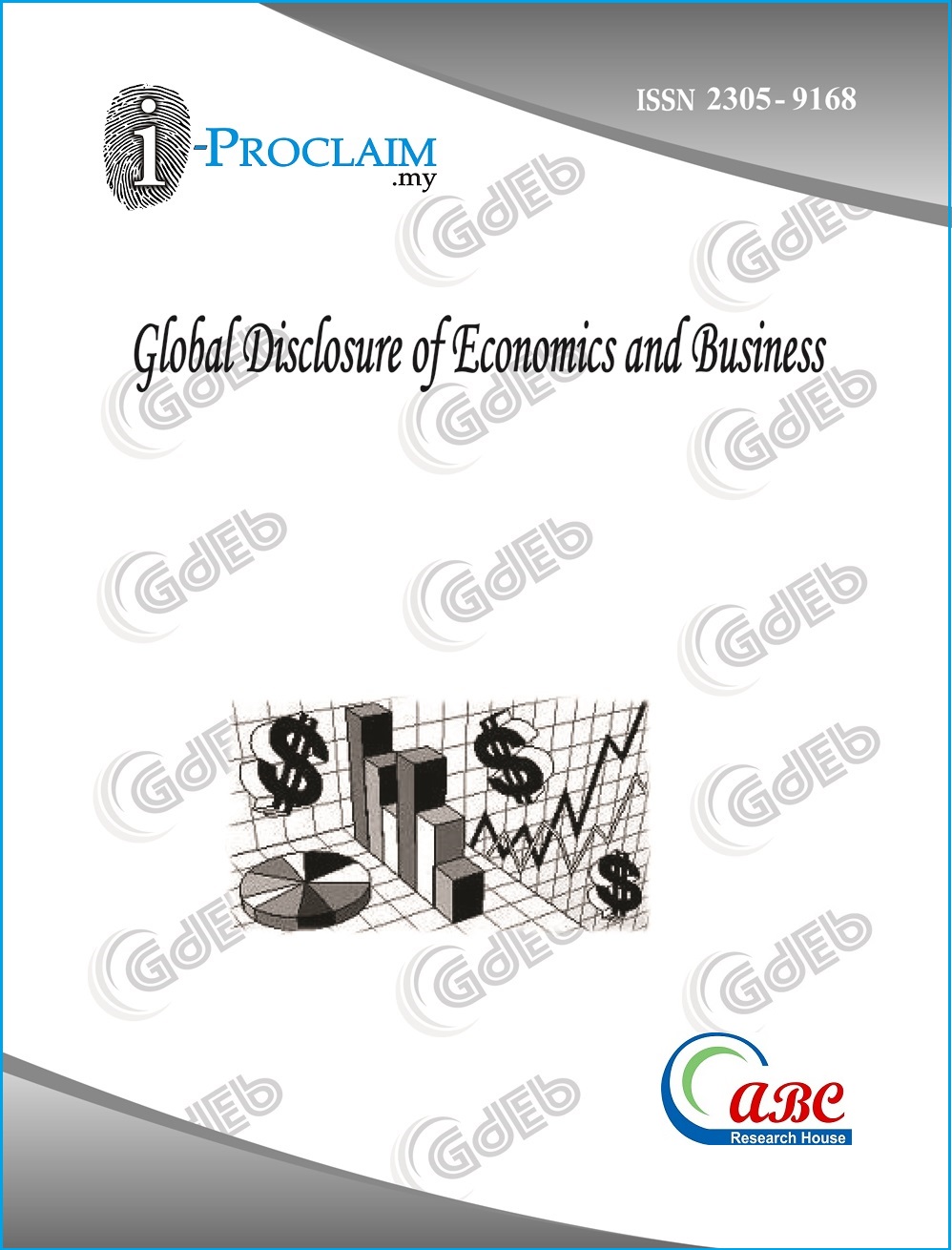Measuring Underground Economy of Bangladesh: Transaction Approach
DOI:
https://doi.org/10.18034/gdeb.v1i2.195Keywords:
Underground Economy, Transaction Approach, BangladeshAbstract
Underground economy is a malaise for the government that restricts its fiscal ability and infuses confusion in development planning. For a developing country like Bangladesh, which thrives for prospering this can hurt disproportionately. Therefore, measuring underground economy is important for Bangladesh. In this study, using data of 1980-2010 we have used transaction method proposed by Feige (1979) to calculate its extent in Bangladesh. We have found that unreported economy accounts a substantial portion of official GDP. Its growth rate was high positive in some years and in some other years it experienced a stagnant trend. Although few but in some years it declined relative to GDP as well.
GEL Classification Code: A31; O40
Downloads
References
Adair, P. (2011). Non-Observed Economy in the European Union countries (EU-15): A comparative analysis of estimates, in: M. Pickhardt and A. Prinz (eds.), Tax Evasion and The Shadow Economy, Cheltenham: Edward Elgar, forthcoming.
Ahumada, Hildegart, Facundo Alvaredo, and Alfredo Canavese, (2007), “The Monetary Method and the Size of the Shadow Economy: A Critical Assessment,” Review of Income and Wealth, 53(2), 363-371. DOI: https://doi.org/10.1111/j.1475-4991.2007.00234.x
Bhattacharyya, D. K. (1990). An econometric method of estimating the hidden economy, U.K. (1960–1984): estimates and tests, Economic Journal, 100, pp. 703–717.
Escobedo, M. I. and Mauleón, I. (1991). Demanda de dinero y economía sumergida, Hacienda Pública Española, 119, pp. 105–25.
Feige, E. and Urban, I. (2008) ‘Measuring Underground (Unobserved, Non-Observed, Unrecorded) Economies in Transition Countries: Can We Trust GDP?’, Journal of Comparative Economics 36: 287-306. DOI: https://doi.org/10.1016/j.jce.2008.02.003
Feige, E., “How Big is the Irregular Economy? Challenge, 22(1), 5–13, 1979 DOI: https://doi.org/10.1080/05775132.1979.11470559
Gutmann, P. (1977) ‘The Subterranean Economy’, Financial Analysts Journal 33: 26-34 DOI: https://doi.org/10.2469/faj.v33.n6.26
Hassan K M (1997), The Estimation and Policy Implications of the Underground Economy: The Case for Bangladesh, The Bangladesh Development Studies, Vol. 25, No. 3/4 (Sept.- Dec. 1997), pp. 151-173
Kazemier, B. (2006). Monitoring the Underground Economy – A Survey of Methods and Estimates, in: Enste, D. and Schneider, F. (eds.), Jahrbuch Schattenwirtschaft 2006/2007, Vienna: LIT, pp. 11–53.
Klovland, J. T. (1980). In search of the hidden economy: Tax evasion and the demand for currency in Norway and Sweden. Discussion Paper 18/80, Norwegian School of Economics and Business Administration, 1980.
Klovland, J. T. (1984). Tax Evasion and the Demand for Currency in Norway and Sweden. Is there a Hidden Relationship? Scandinavian Journal of Economics, 86 (4), pp. 423–439.
Pickhardt, M. and Shinnick, E. (2008). Governance and Illicit Activities: A Survey of Recent Issues and Developments, in: Pickhardt, M. and Shinnick, E. (eds.), The Shadow Economy, Corruption and Governance, Edward Elgar: Cheltenham, pp. 3–17.
Reza, S (1989) Black Economy In Bangladesh: Some Preliminary Observations, Savings and Development, Vol. 13, No. 1 (1989), pp. 23-43
Schneider, F. and Enste, D. (2000). Shadow Economies: Size, Causes, Consequences, Journal of Economic Literature, 38, pp. 77–114.
Schneider, Friedrich, Andreas Buehn, and Claudio E. Montenegro (2010), “Shadow Economies all over the World: New Estimates for 162 Countries from 1999 to 2007,” World Bank Policy Research Paper 5356.
Schneider, Friedrich, Andreas Buehn, and Claudio E. Montenegro (2011), “Shadow Economies all over the World: New Estimates for 162 Countries from 1999 to 2007,” forthcoming in: Schneider, Friedrich (Ed.), Handbook on the Shadow Economy, Edward Elgar Publishing
Tanzi, V., “The Underground Economy in the United States: Annual Estimates, 1930–80,” IMF Staff Papers, 30(2), 1983. DOI: https://doi.org/10.2307/3867001
Tanzi, V., “Underground Economy and Tax Evasion in the United States: Estimates and Implications,” in V.Tanzi (ed.), The Underground Economy in the United States and Abroad, Lexington Books, 1982.
Tanzi, Vito, The Underground Economy in the United States: Estimates and Implications, Banco Nazionale del Lavoro, Rome, December 1980.
Thomas, J.J. (1992), Informal Economic Activity, LSE Handbooks in Economics, London: Harvester Wheatsheaf.
United Nations Economic and Social Council, (2006). The Role of Informal Sector in Poverty Reduction (3rd ed.). Bangkok: United Nations Economic and Social Council.
Williams, C. C. (2006), Entrepreneurship and the Underground Economy: The Missing Link, Edward Elgar, Aldershot.
--0--










